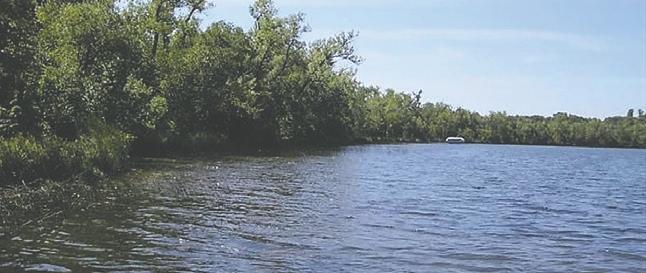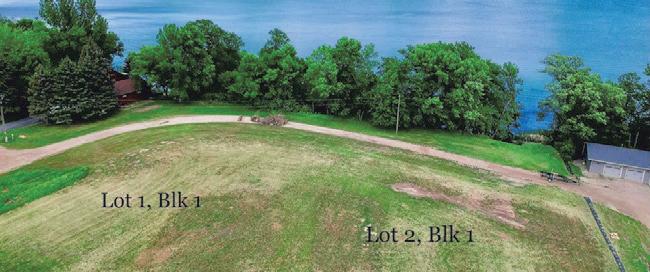PROPERTIES


JUNE 26, 2021
For Sale: 101 Altavista Dr, Detroit Lakes


See page 2 for details.




JUNE 26, 2021
For Sale: 101 Altavista Dr, Detroit Lakes


See page 2 for details.

MLS #: 20-33714 $899,900
Expansive beautiful BRAND NEW home with shared ownership access on DETROIT LAKE without the yard maintenance!!


This new construction overlooks a peaceful pond and also a view of Big Detroit. Home includes a finished main floor with 3 bedrooms and 2 1/2 bath and an unfinished basement with opportunity for 2 more bedrooms, 1 bathroom and a large family room. Call for a private tour and more information about finishing details!! Property INCLUDES: 1/9th undivided interest in private access lot and dock on Big Detroit Lake (administered in a separate association). Vacant lots starting at $85,000, No special assessments. Call for details.
County: Becker

Near: Detroit Lakes ID: 03038100



Border Water: No
Sentinel Lake: No
Size and Depth
Area: 3067.13 acres

Littoral Area: 1895 acres
Shore Length: 12.93 miles
Mean Depth: 14.8 feet
Maximum Depth: 89 feet
Fish Species:
black bullhead, black crappie, bluegill, brown bullhead, brown trout, bullheads, channel catfish, green sunfish, hybrid sunfish, lake sturgeon, largemouth bass, muskellunge, northern pike, pumpkinseed, rock bass, smallmouth bass, sunfish, tullibee (cisco), walleye, yellow bullhead, yellow perch, bowfin (dogfish), white sucker, banded killifish, blackchin shiner, blacknose shiner, bluntnose minnow, brook stickleback, central mudminnow, common shiner, creek chub, golden shiner, Iowa darter, Johnny darter, logperch, minnows, pugnose shiner, shiners, spottail shiner, tadpole madtom




If you live in the city or the suburbs, you might be looking for a place to escape the daily grind. Whether it’s a cottage by the lake or an old farmhouse in the countryside, a second home provides an oasis for weekend getaways and summer vacations. It can also be a place where memories are made. Here’s how to create your own cherished moments.
Start the morning with a breath of fresh air. Relish the peace and quiet as you sip your coffee on the porch, or watch the sunrise from an Adirondack chair on the dock. With your partner or kids, spend the day paddling in a kayak or canoe, exploring the area by bike or splashing around in the pool or lake.



If you’re feeling lazy, curl up in a hammock and doze off to the

sound of birds chirping, wind in the trees or waves lapping the shore. On a rainy afternoon, take a trip into town, play board games by the fireplace or put on your raincoat and rubber boots for a trek in the woods.

Take advantage of the long summer evenings to roast marshmallows and hot dogs over a campfire as you sing songs, tell stories and watch the sunset.
From barbecuing and birdwatching to scavenger hunts and water gun fights, there’s no shortage of fun to be had at a second home. So, are you ready to find your little slice of paradise?
Seek advice from a local real estate agent to find the perfect second home for you and your family to enjoy for years to come.








Whether you’re buying your first fishing rod or making an upgrade, here are the key factors to consider when shopping for a rod.




Fishing rods come in a variety of sizes. Shorter ones don’t cast as far and are designed to be used with lightweight lures. They have the advantage of giving you greater control when fighting with a fish. In addition, they’re more powerful, which makes them a better option for big-game fishing.

Longer rods cast farther and are needed for fly fishing or if you want to use heavier lures. In addition, they’re the best option for surfcasting, which is when you fish from the shore rather than a boat or pier.

The most common materials for rods are graphite, fiberglass and composite, which is a combination of both materials. Graphite rods are lighter, stiffer and more sensitive than fiberglass rods. As a result, they allow you to detect lighter bites. Fiberglass rods, in turn, are heavier, more flexible and less sensitive. However, they have the advantage of lasting longer and costing less.
Composite rods offer the best of both worlds. However, they’re also the most expensive option.


Another factor to consider is the ease with which a rod flexes. This is referred to as its action, which can be categorized as light, medium or heavy. When deciding on a rod, keep in mind the following:
• Light or slow-action rods bend near the butt of the rod. They’re ideal for fishing smaller species.
• Heavy or fast-action rods have a stiffer backbone and bend near the tip. They’re ideal for hunting bass and other large species of fish.
• Medium-action rods represent a middle-of-the-road option and are a good pick if you intend to fish a wide variety of species.
There are two types of reels: spinning and casting. Spinning reels are the best option for beginners, as they’re easier to use and control. However, many seasoned anglers prefer casting reels as they allow for more precise casting.
For more personalized advice, talk to a pro at your local tackle shop.

BIG MCDONALD LAKE-Great swimming, hard sandy bottom with 130’ of lake frontage. 2 bdrm yr round modular home. Property offers a spacious back lot, an old boathouse with unique potential so close to the lake, & a peaceful setting on a quiet road. Large lakeside deck. #20-33894 $360,000

RURAL SABIN-Custom Built 2 story, 2008 home located on approximately 6.6 acres. Home is a 4 Bdrm, 4 Bath with 3-stall finished & attached garage plus a 60x78 steel lined and insulated shed with three 14’ insulated overhead doors! Quality built and tastefully decorated home! #20-33906 $879,000




STAR LAKE - 80 Acres & 2400’ of lake frontage on recreational lake renowned for great fishing! Energy efficient year round home built in 2003 with cathedral ceilings and an abundance of lakeside windows! Custom kitchen & gas fireplace in great room & LL family room. Attached 2-car garage. #20-33493 $799,000


HEART OF LAKES COUNTRY, GOLF COURSE LIVING: Tasteful 3 bedroom, 3 bath home features an elegant great room w/gas fireplace, beautiful kitchen cabinetry, breakfast nook, & formal dining area. The upper level loft is great space for Bdrm/Storage/TV room. Attached double, heated garage plus golf cart garage. Great views of the water on Oak 2 & 3 additional fairways on the 27 hole Perham Lakeside Golf Course. #20-33015 $399,000
E
Opportunities to engage in outdoor sports abound each spring and summer. Water sports are especially popular during these times of year, as few things evoke the spirit of spring and summer recreation quite as well as activities that involve oceans, lakes, rivers, and other bodies of water.


Paddlesports have become especially popular in recent years. According to the Outdoor Industry Association, nearly 23 million Americans engaged in at least one paddling activity in 2018. Paddlesports also are popular in Canada, where the paddling community Paddle Canada reports that more than 10,000 students take paddlesports courses each year.
Safety is essential when on the water. Both seasoned paddlesports enthusiasts and novices can benefit from revisiting safety techniques and guidelines as they prepare to take to the water this spring and summer.
• Enroll in a safety course. Local organizations and governments typically offer safety courses that teach students the laws and regulations that govern activities on the water as well as proper operation procedures. Such courses can teach novices or remind veterans how to board paddlecrafts like canoes, kayaks and paddleboards. These lessons can be invaluable to water sports enthusiasts and many courses are free or inexpensive.
• Wear a life jacket. Life jackets are a must-have when engaging in

paddlesports. Most states in the United States mandate that there must be at least one U.S. Coast Guard-approved
life jacket per person onboard a vessel, and that includes kayaks and paddleboards. The Washington State Parks
department notes that some modern life jackets are designed specifically for paddlesports, so there’s no reason to avoid wearing one while on the water.

• Wear a leash. Leashes ensure paddleboards don’t drift away when falling off the board. There are many varieties of leash, and novices should speak with a professional at their local outdoor recreation store to find the right leash for them.


• Always check the weather report. It’s vital that paddlesports enthusiasts check the weather report before taking to the water. Athletes should pay particular attention to the forecasts for the bodies of water where they will be paddling. For example, when paddling in an ocean, pay attention to wave forecasts and information about the tides. When paddling on a river, take note of river flow information when reading the forecast. Recognizing how these variables can affect your time on the water is vital to ensuring a safe trip.
• Take essentials with you. Whistles, smartphones (in waterproof bags), sun protection, and drinking water can keep paddlers safe on the water. Take the length of trip into consideration when packing essentials.
Paddlesports season has arrived. That makes now a great time to revisit the many ways to stay safe on the water.
Have you decided to invest in a vacation property where you can spend your weekends and summer holidays? Before you make an offer, there are several factors to consider. Here are four tips to help you choose a second home.






Unlike your primary residence, your second home doesn’t have to be close to your work or children’s school. Take advantage of this opportunity to find a property in a quaint area or near a place where you can enjoy hobbies like hiking, kayaking or skiing. Just be sure to factor in how long it takes to get there and whether the location is accessible year-round.


The type of dwelling you choose should depend on how you intend to use it. Will it be a private getaway for you and your partner, or do you want to make it a summer home for the whole family? Additionally, think about whether you’d prefer a detached residence like a cottage, or a smaller space with less upkeep such as a condo.
Depending on your financial situation, it might be preferable to rent a vacation home. If you’d rather buy a property, remember to calculate the

cost of maintenance, insurance, renovations and other expenses. If you can’t afford the purchase, talk to your family about the possibility of sharing a second home.
Do you intend to sell your primary residence and move into your second home after you retire? If so, make sure

the property and location can accommodate your future needs. If you plan to sell the place after a number of years, determine what renovations and upkeep will be needed to attract potential buyers.


For expert guidance in your search for a second home, don’t hesitate to reach out to a real estate agent who’s familiar with the area.













